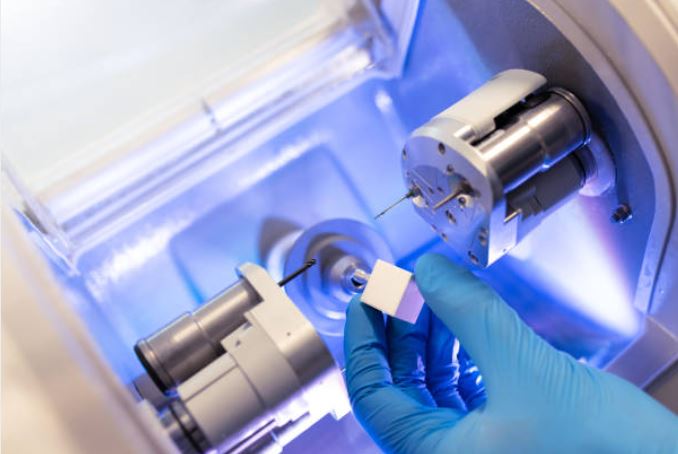
Technology in dentistry has come a long way. From Intraoral Scanners to CAD/CAM technology and more, our office uses the most innovative dental technology to improve patients’ experiences. This state-of-the-art technology also give our doctors better insights into clinical decision-making, allowing for more accurate diagnoses and better-personalized care for each patient.
CAD/CAM Dentistry
CAD/CAM (computer-aided-design and computer-aided-manufacturing) is used to improve the design and manufacturing of custom crowns in just one visit, eliminating the need for multiple appointments and temporary restorations. This technology produces highly precise restorations that are both durable and natural-looking.
CAD/CAM is used for:
3D Printing
The 3D printing process involves using digital scans of a patient’s teeth and oral structure to design and print customized dental solutions. Unlike traditional manufacturing methods that require molding and casting, 3D printing builds up dental objects layer by layer using materials such as resins, ceramics, or metals. This process is faster, more accurate, and highly customizable compared to traditional methods, offering improved patient outcomes. 3D printing in dentistry is used for making crowns, bridges, implants, aligners, dentures, and even surgical guides.
How 3D printing works in dentistry:

Intraoral Scanner

An intraoral scanner is a handheld device that creates a 3D model of a patient’s teeth and gums. It’s used by dentists to capture a digital impression of a patient’s mouth, which can be used to create dental restorations, implants, and sleep appliances.
Autoclave Sterilization
Autoclave sterilization is essential in dentistry because it ensures that dental instruments are properly disinfected and free from harmful microorganisms like bacteria, viruses, and spores. This process is crucial for patient safety and preventing cross-contamination between patients.
In dentistry, autoclaves use high-pressure steam at elevated temperatures (typically around 121-134°C or 250-273°F) to sterilize instruments such as scalers, forceps, and drills. These tools come into direct contact with oral tissues, saliva, and blood, making it critical to eliminate all potential pathogens to avoid infections.

Surgical Guide for Dental Implants

In-House 3D CT-Scan
This latest in CT technology provides patients with high-quality images at a lower dose of radiation than ever before. 3D Cone Beam Imaging is a fast and painless method where a quick scan generates detailed, 3-dimension color images of the face, neck and teeth provide a more accurate diagnosis and plan for treatment.


Air and Mercury Filtration
To provide our patients and staff with th he safest and highest quality air, we use IQ Air Health Pur Plus Air filtration in all of our treatment rooms. This system provides protection against aerosolized viruses, bacteria and disinfects. Another filter removes mercury vapor that is generated when removing “silver” filings.
Dental Lasers

Lasers are concentrated beams of light energy. The heat created by lasers is what dentists use to cut, reshape and clean soft or hard tissues in the mouth. Altering the wavelength of a laser changes the amount of heat it generates. Using a laser typically reduces the need for a local anesthetic and the patient is less likely to deal with anxiety, pain and discomfort afterward. Procedures performed with lasers also lower the risk of infection, reduce bleeding and pain, and speed the healing period.
Digital X-Ray Sensors
Instead of using photographic film, digital X-ray technology employs digital sensors to capture images. When these sensors are exposed to X-rays, they instantly convert this energy into a digital format. This immediacy means there’s no waiting for the film to develop, speeding up the review process.
Digital X-rays offer not only rapid results but also clearer, high-resolution images. These images can be easily magnified, adjusted, or shared on a computer. Moreover, their reduced radiation exposure positions them as a safer alternative in many diagnostic scenarios.

STA Single Tooth Anesthesia System

The Single Tooth Anesthesia System is a computer-controlled injection technology that allows the injection of the local anesthetic below the patient’s pain threshold making the injection precise, efficient and virtually painless.

